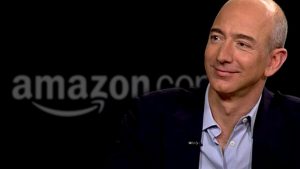Here, I want to make three simple points: 1) Very, very few CEOs have an accurate understanding of their company’s culture, or of the relationship between culture and performance capacity. 2) Organizational culture is a reflection of a CEO. 3) Most CEOs will discount the importance of changing their corporate culture if company profits are deemed respectable. These are three consistent axioms I have learned in over forty years as an advisor to CEOs and corporate boards.
An August 15, 2015, New York Times article described an organization culture that is systematically hyper-stressful, arrogant and anxiety-provoking. “Inside Amazon: Wrestling Big Ideas in a Bruising Workplace,” by Jodi Kantor and David Streitfeld. The subtitle: “The company is conducting an experiment in how far it can push white-collar workers to get them to achieve its ever-expanding ambitions.” The article has been provocative! Subsequently, many related articles have been published and thousands of “comments” contributed. One counterpoint response appeared August 16th on Business Insider, written by Amazon employee, Nick Ciubotariu: “An Amazonian’s response to ‘Inside Amazon: Wrestling Big Ideas in a Bruising Workplace’.” I provide these links so you can initiate your own reading on the controversy and gain some insight into the culture of the world’s largest retailer.
Amazon is not my client, and I do not know Amazon Founder and CEO, Jeff Bezos, New York Times writers Kantor and Streitfeld, or Amazonian Nick Ciubotariu, but I hope this controversy fosters a wider conversation that, in turn, leads to a greater consciousness of three of the biggest and least-understood problems in the world of work – the three axioms I stated in the first paragraph.
Jeff Bezos expressed that the Amazon described in the New York Times is not the Amazon he knows. I believe he is telling his truth. Nick Ciubotariu refutes the New York Times article, point-by-point with what he calls “data”. He has been an employee of Amazon for only 18-months – a complex company of over 150,000 workers – and I believe he is telling his truth. I also have no reason to believe that the current and past employees of Amazon who have been cited and quoted are not telling their truths.
So what are we to believe, even if we remain confused about Amazon’s organizational culture? Believe the three axioms.
The findings of numerous studies (i.e., Gallup, IBM, Deloitte University, Inc. Magazine, Aon, APQC, and others) conclude that organizational culture is regarded by the vast majority of employees, at all levels, as not trustworthy. A Gallup global study shows that on average 87% of employees are disengaged, disconnected and don’t care about their companies, primarily because the companies don’t care about them. To every CEO, this should be unacceptable. Unfortunately, it is grossly misunderstood or worse, like cancer that is ignored, by those at the top of the culture.
Forty years of working with CEOs allow me to state, unequivocally, that culture is the least understood element of leadership and yet, the most critical in improving and sustaining performance, at every level. Nothing is more fundamental.
The current models of leadership and organizational development that are prevalent in business do not work, and the research emphatically demonstrates how ineffective they have been over the past decades. Hundreds-of-millions of dollars have been spent and dumpsters full of development plans and programs wasted. Of course, CEOs can’t see this or tolerate this conversation unless they believe, as I do, that their organization is significantly underperforming, including profits. It requires a level of cognitive dissonance that few leaders are prepared to consider … your business is enormously successful (i.e., profitable) and yet your organization’s performance is mediocre?
As a leader, it is perilous to presume that your understanding of your organizational culture is accurate or that profit goals promote the highest human performance. Or that the inherent human brilliance in your company is anywhere close to manifesting the brilliance you could achieve in every facet of performance, including innovation, profits, and shareholder value.
The question is: Are you prepared to deal comprehensively with the three axioms, and maximize employee engagement while leading the transformative power of culture change? Or will you just wait and wince with the next withering headline in the New York Times?



